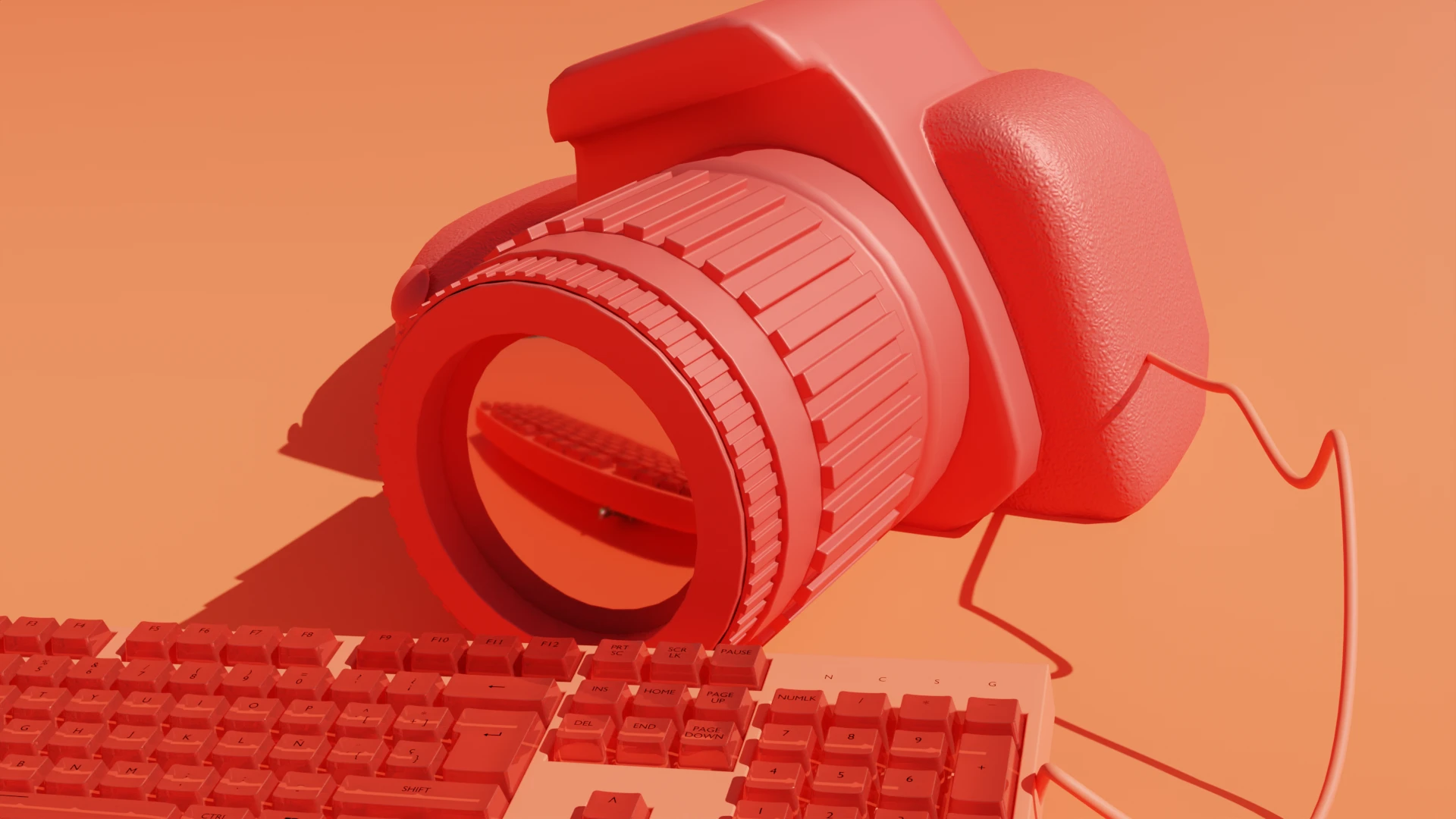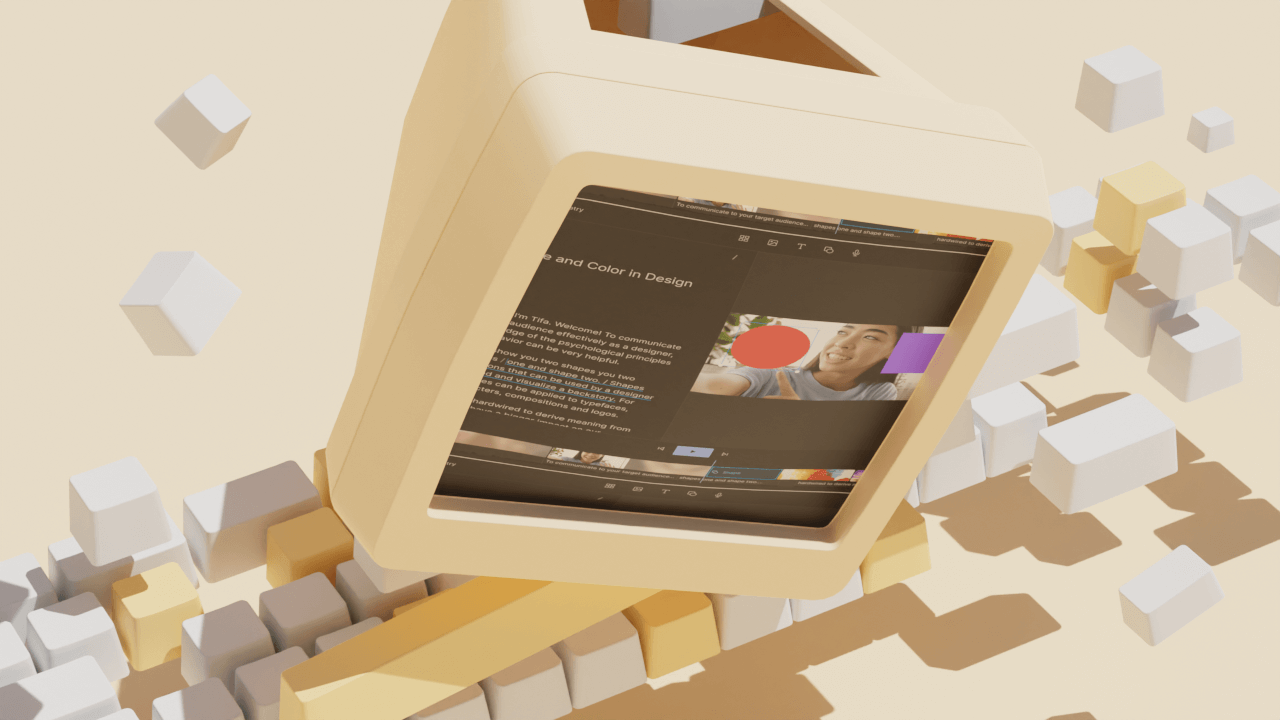What type of content do you primarily create?




We can all agree that the move from silent films to talkies, back in the early 20th century, was a revolutionary moment in cinematic history. But since sound became part of video, filmmakers have had to spend just as much time on the audio parts of their projects as the visual.
After all, audio quality can make or break a film, especially for low-budget projects. If you’re a novice sound designer, that’s a lot of pressure. But stick with us, and we’ll have you mastering the art of how to add sound effects to any video in no time.
--blockquote-success_start--
SOUND SMART: Most sound effects are known as “diegetic” sounds, meaning they come from within the world of the film. Non-diegetic sounds – sounds that come from outside of the film – would be things like background music, narration, or scoring, which you can learn more about here
--blockquote-success_end--
What are sound effects?
Sound effects (more commonly referred to as “SFX”) are the recorded sound cues that help filmmakers tell a story. Good sound effects shouldn’t be noticed at all, and missing sound effects can be as jarring as nails on a blackboard. Or, well, the silent version of that.
Sound effects accomplish a lot in video editing. They flesh out the world for an audience, suggest a mood for the scene, and can even be assigned to specific characters, events, or locations. While some sound effects are necessary, others just add layers of art to the story.
TIFF TIP: Tiff Bauer, Descript's video producer, says not to expect that the mic you’re using for dialogue will pick up all of the sounds you want when you're filming. That mic is focused on the speakers’ voices, and its goal is to cut out all other noise. Remember to record room tone, and make sure you budget plenty of editing time for filling out sound effects.
Types of sound effects can have different names depending on who you ask. So, we went ahead and boiled it all down for you into this SFX cheat sheet:
Hard SFX
Also known as: Spot SFX, Isolated Sounds
Definition: SFX that are connected to something specific on-screen
Examples: Door closing, gun firing, window shattering
Soft SFX
Also known as: Background SFX, Ambience , Atmos (Atmosphere)
Definition: SFX that don’t directly connect to on-screen action but help indicate the setting
Examples: Forest sounds, cicadas chirping, leaves rustling, a stream in the distance
Foley SFX
Definition: SFX made by a Foley artist in sync with the action on-screen
Examples: Footsteps, silverware hitting a plate, a cape snapping in the wind
Design SFX
Also known as: Specialty Effects
Definition: Sounds that don’t exist in nature and are created through a computer manipulating a sound’s waveform
Examples: Mixing together the roar of a lion, tiger, and bear to mimic a dragon breathing fire
Electronic SFX
Definition: Generated by instruments like synths, keyboards, or plug-ins to create an electronic-sounding effect
Examples: The “pew pew” of laser guns firing, the “womp” of a UFO beaming down to earth
SOUND SMART: “Walla” is a specific kind of Background SFX. It’s the imitation of a crowd murmuring, so the sound and language are both unintelligible. It dates back to the early days of radio, when sound designers would gather a group of people and have them repeatedly say “Walla” to mimic the indistinct chatter of a crowd.
Professional sound effects
There are two ways to get sound effects: you can license them or you can create them yourself.
Unless you’re working with a major production company, you’re probably going to rely on licensing. There are plenty of sound effect library memberships or bundled packs you can purchase for commercial use. We recommend checking out Envato Elements — for only $200 / year you can get access to unlimited stock sound effects (not to mention photos, music, videos, and more).
If you’re looking to license on a budget, there are some great royalty-free sound effects libraries out there, like PremiumBeat, ZapSplat, SoundBible, or Freesound.
If you do want to try to create your own sound effects, well, good luck. Creating sound effects has less to do with what something actually sounds like and more to do with what an audience expects to hear. You have to deliver the exact sound an audience is anticipating in order to maintain their suspension of disbelief. You’ll need a recorder, microphone, and cable, and make sure you pay attention to the gain structure and set a limiter to prevent clipping. Also, we recommend you record the sound from three different distances so you can have options when it comes time to edit.
TIFF TIP: “Gain structure” is your recording level. Remember to aim for no less than -18dB and no greater than -12dB.
Play around with unexpected sounds and see what you like — even the most basic household objects can surprise you.
The process of adding sound effects
Editing sound effects in your video is a bit of an art and a bit of a science, especially when you’re trying to balance sound effects with music.
It doesn’t make much sense to start on sound effects until you have a picture lock — i.e., your visuals are completely finished. Otherwise, you could spend hours perfecting the sound design of a scene only to cut it out entirely a week later. You can always add placeholder sounds as you edit, though, as a reminder of what you want to use down the road.
Once your video is locked and loaded, we recommend you start by watching it all the way through and noting the timecodes when SFX are needed, a process known as “Spotting.” Pay attention to moments when your ears perk up and notice noises are too quiet or missing altogether. From there, you can either create your sounds or hunt them down on the web.
Using Descript to Add Sound Effects
If you’re working in Descript, drag-and-drop your audio or video file into a project. Then, drop in your chosen sound effect on a new track at the exact moment you want it to play. Adjust volume levels, and if you need, use tools like Studio Sound to polish your entire mix. It’s a low-stress way to get pro-quality results without swapping between multiple apps.
Once you have your recorded sound effects, start playing around with them. There are a few different techniques you can use here, like layering multiple sounds on top of each other or adding filters.
TIFF TIP: It’s important to keep things like point of view and perspective in mind when editing sound. Each character could be hearing something different, depending on where they are, what’s around them, and so on. Think about which POV you want to highlight and try to find ways to bring it to center stage.
Sound filters explained
Most audio effects can be broken down into four main categories: modulation, time-based, spectral, and dynamic. Here are some of the most common processor techniques out there:
Modulation effects
- Chorus: An audio effect where similar but varying sounds are heard as one. Example: Layering multiple voices all singing the same lines to create a choir performing one singular song.
- Tremolo: Changing the amplitude of a track to make it sound like it’s “trembling.” Example: Volume being raised and lowered to match a person’s heartbeat.
- Flanger and Phaser: A copy of a sound is added to the original sound with a constantly varying short delay where one of the copies gets phase shifted (aka synths). Example: Manipulating a human’s voice to sound like a robotic cyborg.
- Pitch Shifting: Used to shift the pitch of a sound up or down. Example: Making a normal animal noise sound like a deep growl.
Time-based effects
- Delay and Echo: One or more delayed sounds are repeated from the original sound. Example: Replicating the echo that comes from yelling into a canyon.
- Reverb: When large numbers of delayed sounds are mixed over several seconds, mimicking sounds bouncing off of reflected surfaces. Note: while similar to echo, reverb has a shorter "bounce" time. Example: Making a vocalist sound like they're singing in the shower.
Spectral effects
- Panning: Making the track sound like it’s moving from one space to another. Example: Altering a siren to sound like it’s coming in on the left and quickly racing to the right.
- Equalization (EQ): Your audio recording has frequencies ranging from low to high. With EQ, you can either cut (attenuate) or boost (amplify) certain frequencies. Example: Boost the lower frequencies and cut out higher frequencies of an audio recording to make it sound like it’s coming through a telephone.
Dynamic effects
- Distortion/Overdrive: Adding gain to an audio signal and pushing it beyond its peak. Basically, it’s a “make this sound crappy” effect. Example: Making a radio sound old-timey.
- Compression: Reduces the dynamic range of signals so both loud and quiet elements can be heard clearly. In simple terms, it makes the loud parts of an audio signal quieter and the quiet parts louder. Example: Lowering elements of a person’s voice so it sounds like it’s coming from a different room.
Keep in mind that a lot of these sound filters are best when they’re mixed with one another — to get the perfect old-timey radio voice, you’ll probably have to adjust EQ, distortion, and compression.
Tiff Bauer, Descript’s resident video expert, recommends experimenting. “If you need to add footsteps to a video, download five footstep sounds and ‘audition’ each one.” Sound design with SFX is a lot of trial and error, so don’t be afraid to click around and see what you come up with.
Image by Matthew Kwong on Unsplash.
Frequently asked questions
How do I add sound effects to a video in Descript?
First, create or open a project in Descript. Upload your video or drag and drop it into the app. Then, open the Stock panel to find music and sound effects. Select the sound you want, place it on the timeline, and adjust its volume or timing. When you’re done, just export your project to finalize the changes.
Can I add background music or a voiceover with Descript?
Yes. You can import music files or use Descript’s built-in library for background tracks. To add a voiceover, either record your narration in Descript or upload an audio file. Place the track on a new layer in the timeline to fine-tune volume and timing alongside any other audio elements.
Does Descript offer AI tools to improve or clean up audio?
Yes. Descript’s Studio Sound uses artificial intelligence to enhance voices and reduce background noise. Simply enable Studio Sound in the Audio Effects section of the Layer panel to make your audio clearer and more polished with a single click.
Can I add sound to an existing video without losing the original audio?
Absolutely. When you import a video into Descript, any original audio remains in a separate layer. You can insert additional sounds or music on new layers, then adjust each layer’s volume or timing so they blend seamlessly. This lets you keep or modify the original audio and add new effects.





























%201.svg)










